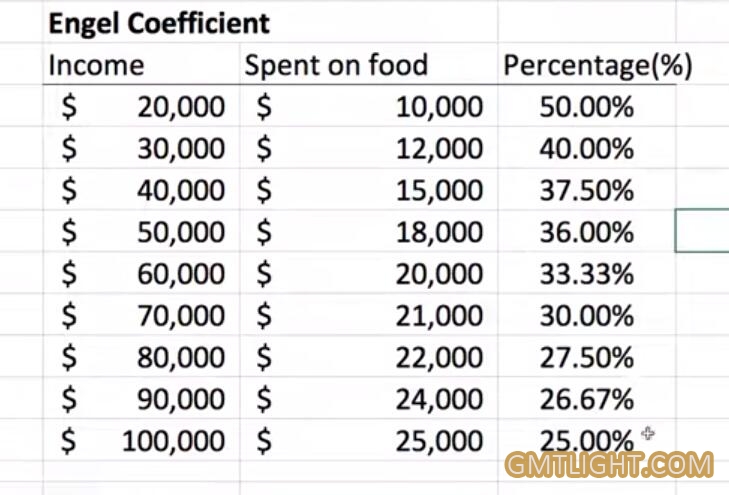American pork is one dollar a pound, while Chinese pork is five dollars

The price of pork in the United States is one dollar a pound, but it is five dollars in China. The wage level in China is less than one fifth of that in the United States, but the price of pork is five times that in the United States. Why?
If there is an answer, it is that the Chinese are still near the poverty line.
Let's use the Engel coefficient method to analyze it, and you will understand.
Engel coefficient method is a commonly used method to measure the poverty line in the world. It refers to the proportion of food expenditure in the total consumption expenditure of households. It decreases with the increase of household income, that is, the greater the Engel coefficient is, the poorer it is. There is no doubt that Chinese people are poorer than Americans.
This is because the consumption of food will not increase or increase as a percentage of household income. Therefore, the percentage of food expenditure in total consumption (i.e. Engel's coefficient) can be used to judge a person's quality of life. The higher the Engel's coefficient is, the worse his quality of life will be. The lower the Engel's coefficient is, the higher his quality of life will be. "
In the United States, from 1965 to 1980, when calculating the poverty standard, the Engel coefficient of poor families is invariable. The assumption that "one third of the living budget of the poor is used for food consumption" is valid for a long time.
Of course, Engel's coefficient is only a reference value, there are many disputes.
It may be feasible to use an unchanging "internationally recognized" poverty standard of Engel's coefficient, such as 60% or 50%, for general research or for international comparison. However, it is too rough to determine the poverty line related to social assistance in a country or a region. Because at least the consumption structure and price level of each country and region will show great differences, so the Engel coefficient of each country and region will also show great differences.
Take the United States as an example, their assumption is: in the living budget of a family of four, 1 / 3 is used for food, 1 / 3 for housing, and 1 / 3 for clothing, furniture, transportation, health care, water, heating, electricity, various taxes, literature and art. In this living budget, one third of the expenditure on housing is to be ensured. Therefore, if the expenditure on food exceeds one third, many necessary expenses will need to be reduced, and poverty will be the result.
Canada's poverty standard is different. They think that what needs to be measured is not only food consumption, so they set the poverty standard according to their own situation. The expenditure on food, clothing and housing accounts for 62% of the living budget. This calculation method goes back to the original meaning of Engel coefficient.
As for China, the situation is very different. The vast majority of ordinary urban residents in China spend only a small part of their rent compared with their income, which is no more than 10% of their wages, while the expenditure on food consumption is much larger, which is generally about 50%. If the Engel coefficient is simply 50%, it will be compared with the actual situation.
No matter how to understand it, there is no doubt that Chinese people are poorer and have lower living standards than Americans. there is a big gap to be kept longer time in futher.




